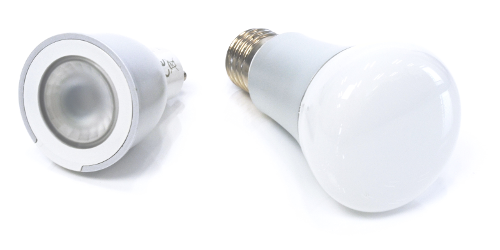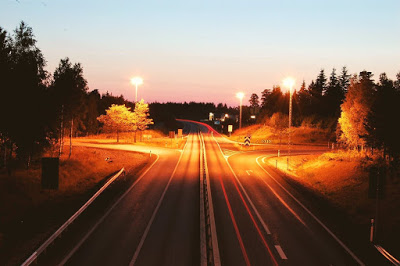How To Create Led Electrical Lighting On Your Own
Start Using LED Flood Lights For Extra Illumination At Lower Costs
LED lights have evolved over the years and are becoming more and more prominent in terms of use both in the residential and industrial sectors for lighting purposes. The various benefits of LEDs have benefitted the lighting industry substantively over the last few years, and the versatility of these lights have made them exceptionally useful for various lighting purposes. LED flood lights are now increasingly being used not only in homes, but also in commercial and industrial locations where there is a requirement for a bright, steady stream of light for long durations. The various advantages of the LEDs make it possible for utilization in outdoor LED flood lights, as discussed below:
With LEDs, you receive extra lighting minus the extra consumption cost, a fact which is made possible by the extremely high efficiency LEDs. Super-efficient, these lights are approximately 80% efficient in converting electricity into light energy. Traditional bulbs and lights pale in comparison, as their efficiency levels are around the 20% mark. These lights also require less energy to light them up, as there are no metal filaments to heat us as opposed to traditional bulbs that use the filament-heating concept to create light
Less heat is generated when we use LEDs, making them much more comfortable to have around you. Due to their high efficiency levels in transforming electricity to light energy, only a small amount is converted to heat energy, which means that you do not feel hot when you are close to these lights. And it also means that you contribute less towards global warming, so LEDs can be considered environmentally-friendly lights

LED lighting bulbs
And stand to save substantially in terms of electricity bills. You could probably recoup up to 70 to 80 percent of your lighting bills simply by switching to these type of lights.Well, the initial investment may be considerably higher, however, when you consider that you are using them for your floodlights, your return-on-investment (ROI) would be barely a few months. And you could then save on electricity for the rest of your lights’ lifespan! And when you consider that the cost of electricity rises almost every year, you are all set for even more savings in the future
You also save in terms of maintenance costs, as LED flood light is highly durable items that can last for really long durations. The average lifespan for an LED is approximately eleven years, and most conventional bulbs last half that duration!
Save on replacement costs when you opt for these LED lights, and you can probably even forget about the maintenance factor once you switch to LEDs!

Energy Savings
LED is a highly energy efficient lighting technology, and has the potential to fundamentally change the future of lighting in the United States. Residential LEDs — especially ENERGY STAR rated products — use at least 75% less energy, and last 25 times longer, than incandescent lighting.
Widespread use of LED lighting has the greatest potential impact on energy savings in the United States. By 2027, widespread use of LEDs could save about 348 TWh (compared to no LED use) of electricity: This is the equivalent annual electrical output of 44 large electric power plants (1000 megawatts each), and a total savings of more than $30 billion at today’s electricity prices.
Learn more about how energy-efficient lightbulbs compare with traditional incandescents.
How LEDs are Different
LED lighting is very different from other lighting sources such as incandescent bulbs and CFLs. Key differences include the following:
- Light Source: LEDs are the size of a fleck of pepper, and a mix of red, green, and blue LEDs is typically used to make white light.
- Direction: LEDs emit light in a specific direction, reducing the need for reflectors and diffusers that can trap light. This feature makes LEDs more efficient for many uses such as recessed downlights and task lighting. With other types of lighting, the light must be reflected to the desired direction and more than half of the light may never leave the fixture.
- Heat: LEDs emit very little heat. In comparison, incandescent bulbs release 90% of their energy as heat and CFLs release about 80% of their energy as heat.

Do I need a special dimmer switch for LED light bulbs?
While most LED bulbs are now dimmable, not all of them are and not all of them dim in the same manner Since LEDs consume such a low wattage, many types of dimmers do not function with LED in the same way that they do with high wattage load incandescents. When dimming an LED you may notice the following:
- Smaller amount of dimming rage (Typically 70-90% range vs. 100% with incandescent)
- LED Bulbs may not shut off at lowest dim setting: this is caused by the dimmer thinking the bulb is completely off due to the low amount of wattage an LED consumes.
- On dimming systems based on X10 or Power Line Carrier (PLC) control technology, LEDs may flicker when modules are communicating due to the small fluctuations in power on the line.
WHAT CAUSES LED FLICKER?
Mains electricity for residential and commercial properties operates on the principle of alternating current (AC); the process by which an electrical current and voltage is periodically reversed in an oscillating motion known as a sine wave. The sine wave constantly moves from negative to positive values in association with the magnetic polarity of the alternator generating the electricity. This fluctuating process enables high power propagation over long distances, but it also causes lights to rapidly switch on and off – or flicker. It depends on the type of light source whether this switching is noticeable or not. For example, incandescent lamps are too slow to actually respond to sine waves of the mains.
Flicker of LED lights is primarily determined by the power frequency of the mains supply, for example the UK’s mains frequency is 50 Hz, which describes an alternating cycle of 50 oscillations between negative and positive poles per second. The potential flicker frequency in a broad range of simple LED light bulbs is subsequently double the power frequency, 100 Hz and caused by rectifying AC power.
While these fluctuations are inherent in the methodology of AC power supplies, flicker can also be caused by driver or software-related issues.